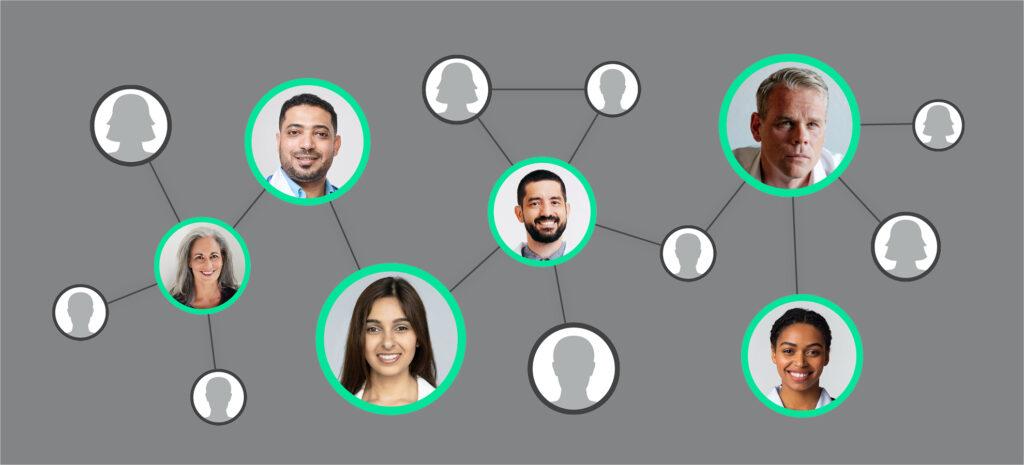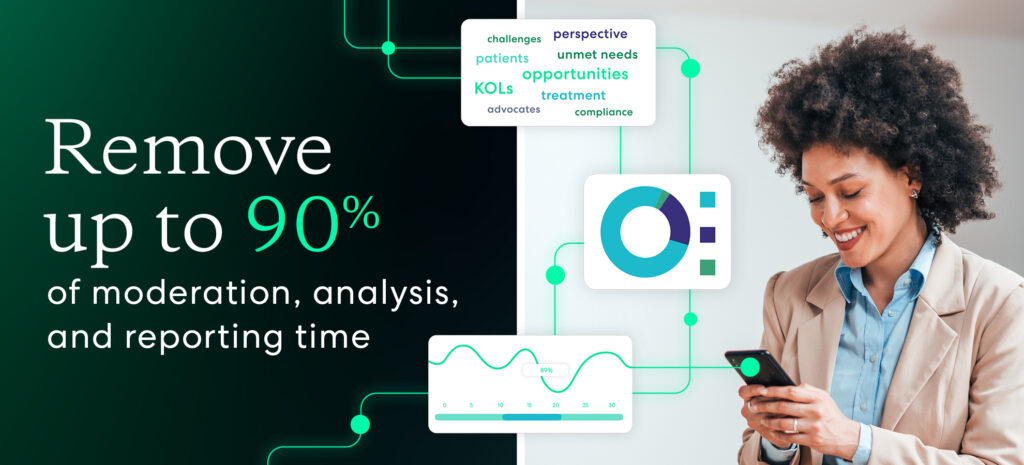When we talk about expert identification in life science, the term “white coats, white faces” crops up again and again. It refers to the small coterie of experts who publish frequently in established medical journals, speak regularly on the medical congress circuit, and whose visibility makes them the go-to opinion leaders for life science companies. This demographic generally skews older, they almost invariably have a HCP background, and more often than not, they’re white.
This isn’t to degenerate these established experts – many of them are extremely qualified, experienced, and their opinions are of immense value to life science. However, without broader diversity and inclusion in expert identification, life science companies are in danger of drawing from the same limited pool of voices as their competitors, and failing to capitalize on the fresh insights a more diverse panel of experts can offer.
“Organizations must ensure that diverse voices are included, and the needs of diverse patient populations are taken into account. This means identifying healthcare providers (HCPs) who serve as external experts, recruiting participants for clinical studies, and selecting individuals for studying the genetic foundation of disease.”
– HIT Consultant
In this article, we’ll discuss how life science companies can improve diversity and inclusion in expert identification with the help of emerging technologies like network analytics, sentiment analysis and natural language processing, and asynchronous virtual engagement.
Digital opinion leaders: a diverse pool of experts
Digital opinion leaders (DOLs) represent an entirely new source of expert opinion for life science companies. Social media and other digital technologies have lowered the barrier to entry for DOLs, meaning people from more diverse backgrounds and lower socio-economic groups can become powerful influencers within their disease communities. And not all DOLs are HCPs. In fact, many of them are social media influencers, junior doctors, patient advocates, or even patients themselves – and won’t be found on the conference circuit or in the pages of medical journals.
Engaging DOLs empowers life science companies to draw from a truly global pool of experts. By accessing a wider, more diverse range of perspectives, the industry can unlock fresh insights to help create commercial opportunities and enhance the patient experience. By contrast, continuing to rely on the same old faces from the same old places risks stagnation.
“Pharmaceutical teams look outward – to both KOLs and patients – for feedback and direction on critical projects that have wide-ranging ripple effects. In a global organization, it makes sense to include global voices – and harnessing a more diverse stream of input based on real-world experiences benefits all participants. By identifying opportunities to be more inclusive, pharma companies can gain a better understanding of HCP and patient experiences, learn more about the markets they serve, and improve patient outcomes while building a competitive advantage.”
– Meerim Almazbek, Senior Director, Product Commercialization, Within3
Finding diverse experts through technology
Emerging technologies enable life science companies to paint a more accurate picture of disease communities, the relationships within them, and the individuals who wield the most influence. The following tools are helping to make expert identification more accurate, effective, diverse, and inclusive.
Identifying experts with network analytics
Network analytics uses a broad spectrum of data sources – including social, scientific, and treatment data – to build a map of disease communities and the relationships within them. Life science companies can view disease community stakeholders, identify who the key influencers and rising stars are, and see how they interact with other individuals within their network. Oftentimes, the individuals who wield the most influence are not the same names as appear at the top of companies’ expert lists. Instead of relying on these established networks, teams can draw on a broader, more nuanced, and more diverse range of experts for invaluable insights.
Understanding experts with NLP and sentiment analysis
Digital tools such as natural language processing (NLP) and sentiment analysis can be used to unlock full value from expert interactions. By analyzing field team observations, NLP and sentiment analysis can provide visibility into what experts are talking about, and how they feel about these topics.
Natural language processing can crunch text from thousands of HCP interactions, and scan the reports for recurring trends and themes. Sentiment analysis, meanwhile, assesses whether experts feel positive, negative, or neutral about a particular topic. By using these tools together, life science companies can better understand their disease communities, and how experts, patients, and payers behave within them.
Connecting with experts through asynchronous engagement
By stepping away from the established “white coats, white faces” within a disease community, life science companies can unlock a range of diverse expert opinions from multiple backgrounds and numerous locations. These individuals might be spread across the globe, across multiple time zones and languages. Asynchronous virtual engagement is a way to bring this global coterie of experts together in one place, where life science companies can collaborate with them, and gain their valuable insights. Engaging virtually allows advisors to connect from wherever they’re based, without the need for expensive or logistically challenging travel. The asynchronous element allows them to engage at a time that works for them, regardless of time zone or schedule conflicts. And in-platform translation functionality means life science companies can hear every voice, and extend the conversation across cultures and nationalities.
By improving diversity and inclusion in expert selection, life science companies can improve patient outcomes, unlock new commercial opportunities, and contribute to creating a fairer, more equitable society for all. See how one biopharma firm unlocked a nine-figure out-licensing opportunity with the help of an unexpected opinion leader, and read our ebook – Confronting the Life Science Diversity Problem – to discover the four technologies helping to improve diversity in life science.






